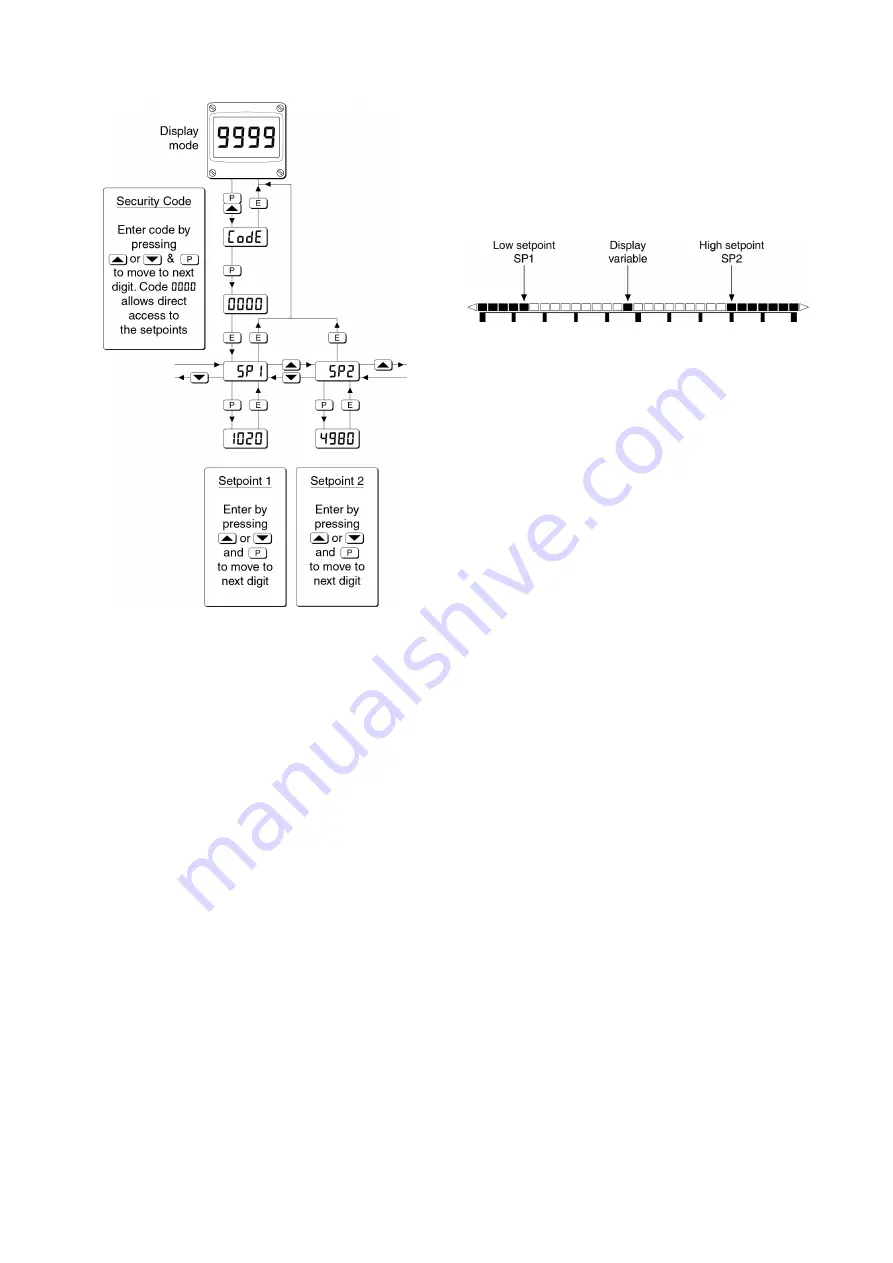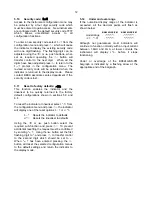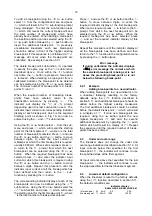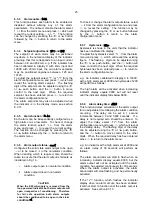
25
Fig 18 Setpoint adjustment from the display mode
To adjust an alarm setpoint select
5P1
or
5P2
and
press
(
which will reveal the current setting.
Each digit of the setpoint may be adjusted using
the
&
or
*
push button, and the
(
button to
move control to the next digit. When the required
setpoint has been entered, pressing
)
will return
the display to the
5P1
or
5P2
prompt from which the
other setpoint may be selected, or the indicator
may be returned to the display mode by pressing
)
again.
Note:
With the indicator in the display mode, direct
access to the alarm setpoints is only available
when the
AC5P
menu is enabled - see section
8.3.11
8.3.13 Displaying setpoints on a
BA524G-SS-PM bargraph.
One of the selectable bargraph formats
Alr5P
allows a low or a high setpoint plus the displayed
value to be represented, or a low and a high
setpoint plus the displayed value to be represented
by the bargraph as shown in Fig 19.
Fig 19 Displayed value and setpoints on bargraph
The bargraph area below the low alarm setpoint
and the area above the high alarm setpoint are
activated.
The displayed variable is represented
by an activated bar which moves between these
low and high alarm setpoints.
When the activated bar representing the displayed
variable is adjacent to the area representing the
low or high alarm setpoints, the bar flashes.
When a displayed variable equals the low or high
alarm the complete bargraph representing the
activated alarm flashes irrespective of whether the
alarm output has been delayed or cleared.
For this function to operate
5P1
must be
conditioned as a low alarm and
5P2
as a high
alarm;
5P1
must always be less than
5P2
.
Incorrect configuration is shown by a flashing
bargraph scale with no activated bars.

































